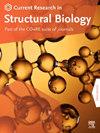Screening, docking, and molecular dynamics analysis of Mitragyna speciosa (Korth.) compounds for targeting HER2 in breast cancer
IF 2.7
Q3 BIOCHEMISTRY & MOLECULAR BIOLOGY
引用次数: 0
Abstract
Breast cancer remains the most commonly diagnosed cancer among women worldwide, with approximately 2.3 million new cases reported in 2022. In the United States alone, an estimated 310,720 new cases of female breast cancer are expected in 2024. HER2-positive breast cancer, characterized by the overexpression of the human epidermal growth factor receptor 2 (HER2), accounts for about 20 % of all breast cancer cases. The development of anti-HER2 therapies has significantly improved survival rates for patients with HER2-positive breast cancer. In this study, we employed in silico methods to evaluate the potential of natural alkaloids, Mitragynine and 7-Hydroxymitragynine, as HER2 inhibitors. Molecular docking revealed binding energies of −7.56 kcal/mol and −8.77 kcal/mol, respectively, with key interactions involving residues such as Leu726, Val734, Ala751, Lys753, Thr798, and Asp863. Molecular dynamics simulations demonstrated the stability of all three complexes, including Mitragynine, 7-Hydroxymitragynine, and Native (SYR127063), over the simulation period. Mitragynine exhibited stronger interaction stability, supported by a higher hydrogen bond occupancy of 39.19 %, compared to 4.32 % for 7-Hydroxymitragynine, while Native (SYR127063) displayed the highest occupancy at 49.66 %. MM-PBSA analysis further validated these findings, with Native (SYR127063) exhibiting the most favorable total binding energy of −163.448 ± 17.288 kJ/mol, followed by Mitragynine at −112.33 ± 22.41 kJ/mol, and 7-Hydroxymitragynine at −103.56 ± 15.61 kJ/mol. ADMET, physicochemical properties, and drug-likeness evaluations indicated that all compounds satisfy Lipinski, Ghose, Veber, Egan, and Muegge rules, confirming their suitability as lead-like molecules. Based on these findings, Mitragynine and 7-Hydroxymitragynine are promising candidates for HER2-targeted breast cancer therapy, with further experimental validation recommended to confirm their clinical potential.

靶向乳腺癌HER2的Mitragyna speciosa (Korth.)化合物的筛选、对接及分子动力学分析
乳腺癌仍然是全球女性中最常见的癌症,2022年报告的新病例约为230万例。仅在美国,预计2024年将有310,720例新的女性乳腺癌病例。HER2阳性乳腺癌以人表皮生长因子受体2 (HER2)过表达为特征,约占所有乳腺癌病例的20%。抗her2疗法的发展显著提高了her2阳性乳腺癌患者的生存率。在这项研究中,我们采用硅法评估天然生物碱米特拉金碱和7-羟基米特拉金碱作为HER2抑制剂的潜力。分子对接的结合能分别为−7.56 kcal/mol和−8.77 kcal/mol,主要相互作用涉及Leu726、Val734、Ala751、Lys753、Thr798和Asp863等残基。分子动力学模拟证明了三种配合物的稳定性,包括米特ragynine、7-Hydroxymitragynine和Native (SYR127063)。7-Hydroxymitragynine的氢键占用率为4.32%,而Native (SYR127063)的氢键占用率最高,为49.66%,显示出较强的相互作用稳定性。MM-PBSA分析进一步验证了这些发现,Native (sy127063)表现出最有利的总结合能,为- 163.448±17.288 kJ/mol,其次是米特ragynine(- 112.33±22.41 kJ/mol)和7-Hydroxymitragynine(- 103.56±15.61 kJ/mol)。ADMET、理化性质和药物相似性评估表明,所有化合物都满足Lipinski、Ghose、Veber、Egan和Muegge规则,证实了它们作为类铅分子的适用性。基于这些发现,米特ragynine和7-羟米特ragynine是her2靶向乳腺癌治疗的有希望的候选药物,建议进一步实验验证以确认其临床潜力。
本文章由计算机程序翻译,如有差异,请以英文原文为准。
求助全文
约1分钟内获得全文
求助全文

 求助内容:
求助内容: 应助结果提醒方式:
应助结果提醒方式:


